Discovering a new energy in Jumilla.
Top of the mountain.
Juan José Cerdan of Bodega Cerron took us to the top of a mountain. Here on one side of the valley, we could see the plains of La Mancha and on the other side, the northern end of the DO Jumilla began and looped around the southern side of the mountains. This part of Jumilla is all limestone with some strata of clay.
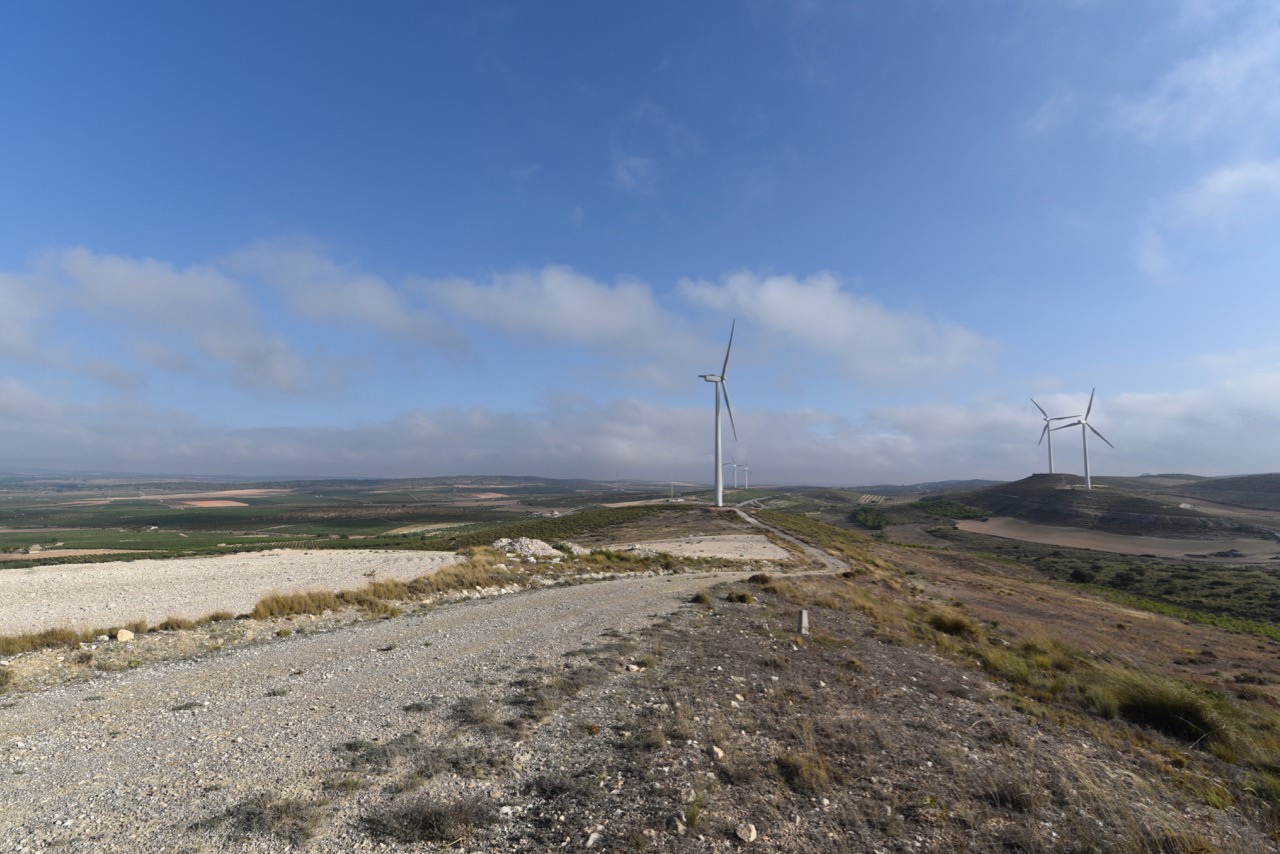
Spanish garrigue?
What appears to be mostly scrub around the vineyards turns out to be wild thyme, rosemary, sage and even lavender. This is akin to the garrigue of Southern Rhone and finds it way in the wines of this estate.
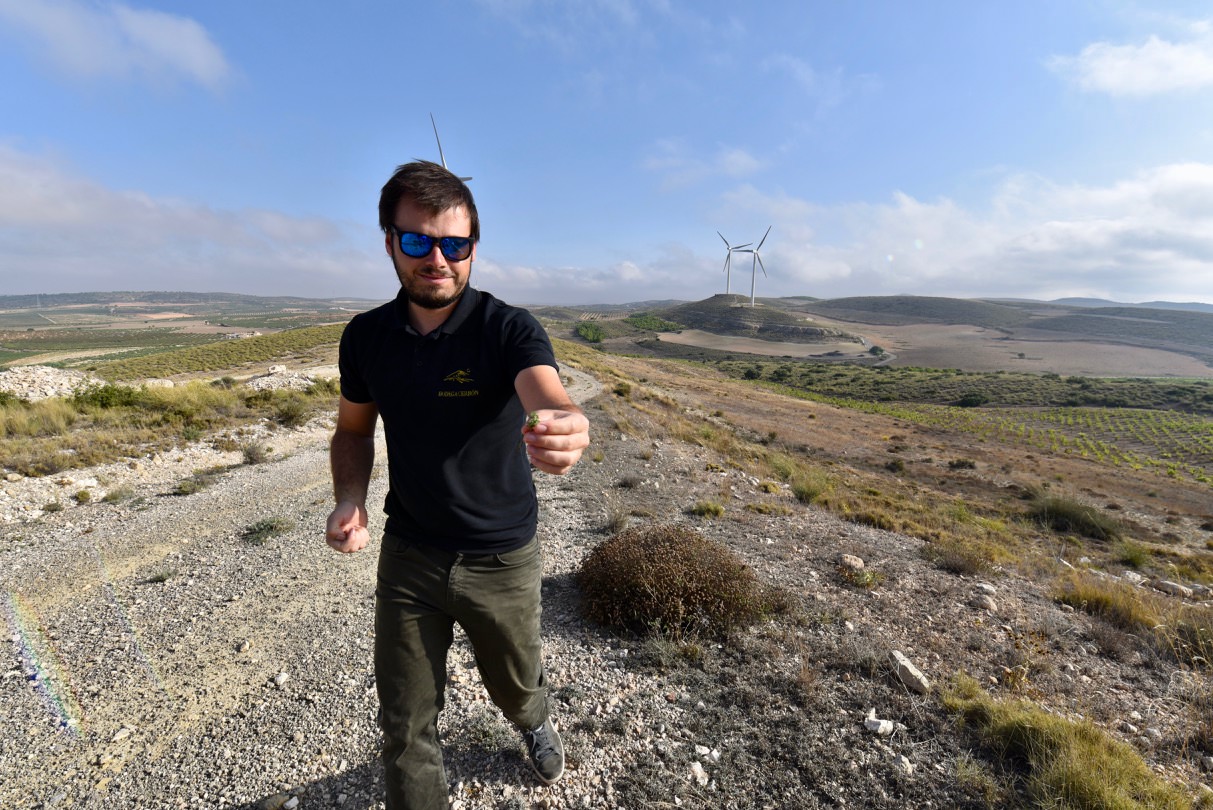
Great wines come from great vineyards.
There is a youthful energy in this place that is very infectious. Juan José Garcia Cerdan, Ilaria Martini and Carlos Garcia are young and they are not afraid to take the winery in new directions. What they do not compromise on, is the care taken in the vineyard. These are certified organic vineyards, but “organic” is not just a buzz word here.
While we were tasting the wines, Ilaria constantly reminded us that these wines are so good, because the vineyards are so good. Most of our tour was of the vineyards, it’s variations in soil and how much individual care is given to each plot.
Bodega Cerron is all about the land.
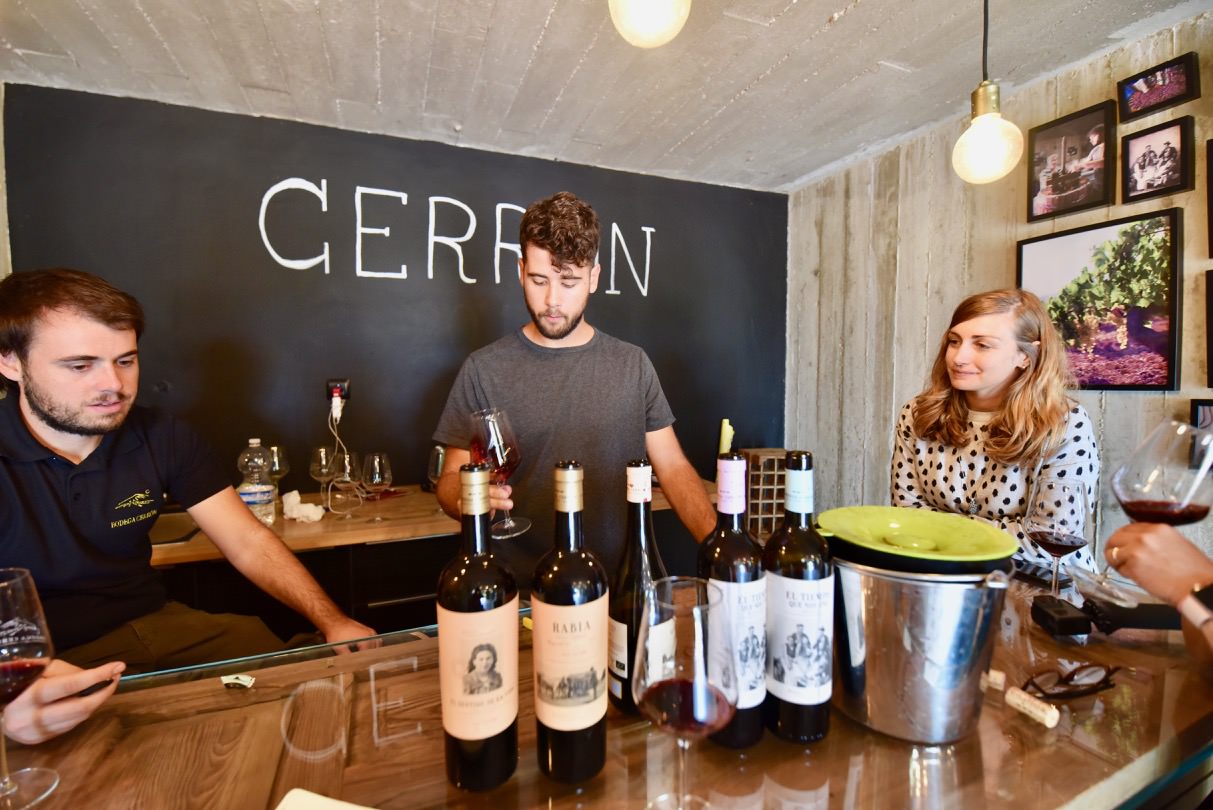
The winery.
When the winery was being designed, Juan José and Carlos’ dad wanted a design that blended with the landscape rather than compete with it. The winery is set into the hill and the roof has native plants growing on top. The interior of the winery is built radiating from a central octagon.
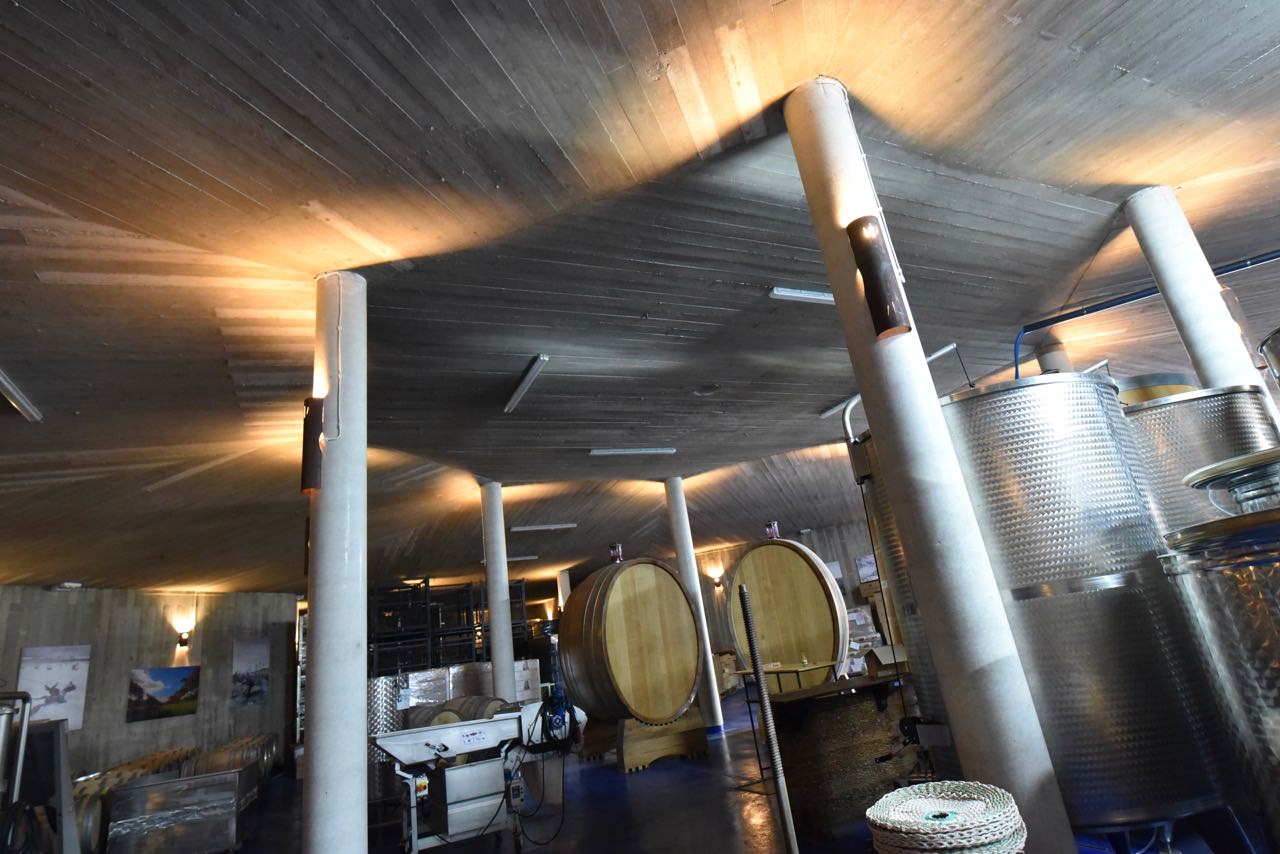
The layout.
Unlike many wineries, where one area leads to another, this is an open space in which you can see all the areas of the winery at the same time. Of course, being a small winery helps. There is no air-conditioning in here. Cool air is drawn from vents on the floor and they exit to the outside through pipes set in the ceiling. The large foudres that house the flagship wine, the Rabia are in the center of this space.
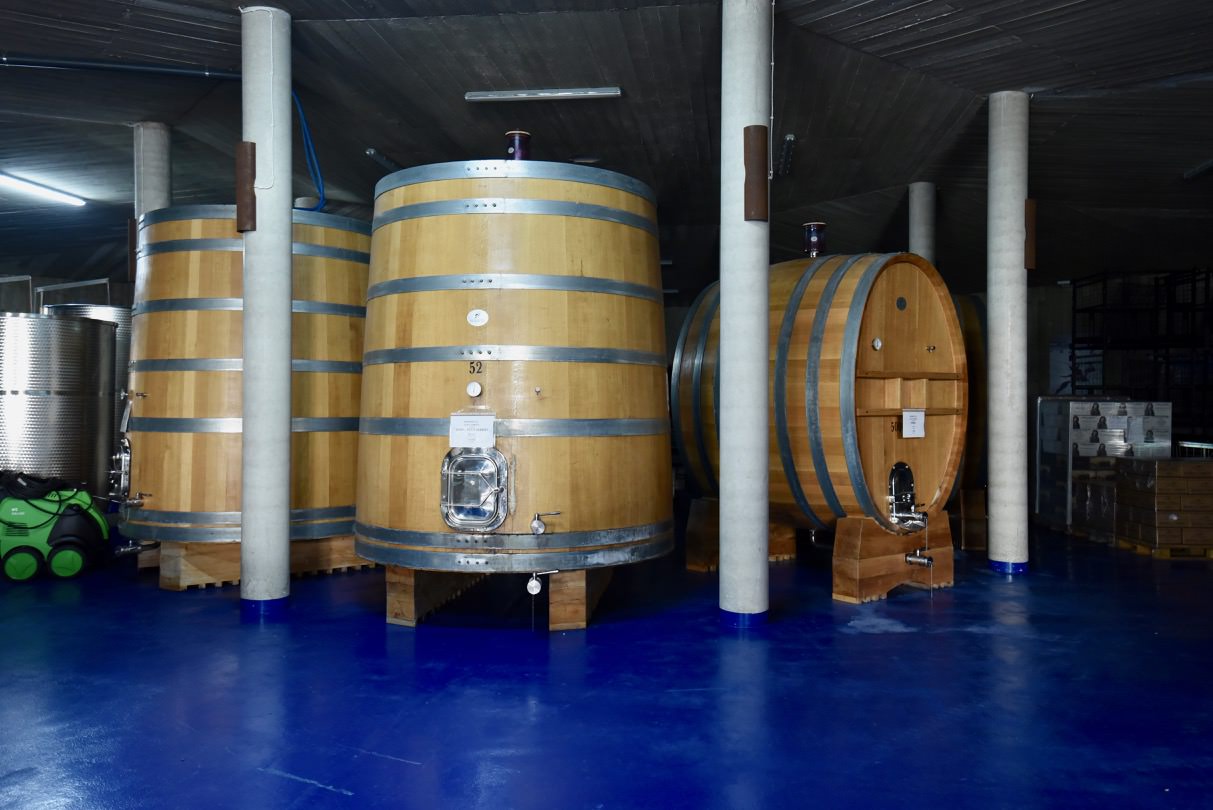
Back to the future.
The young winemakers are not afraid to experiment. Lately, they have been fermenting part of the wine in clay amphoras. The clay comes from nearby Albacete where clay amphoras were made for Romans of yore. They are hand made and fired in a wood burning fireplace by a local potter. No two amphoras are alike and creating a secure cover for them takes some innovation!
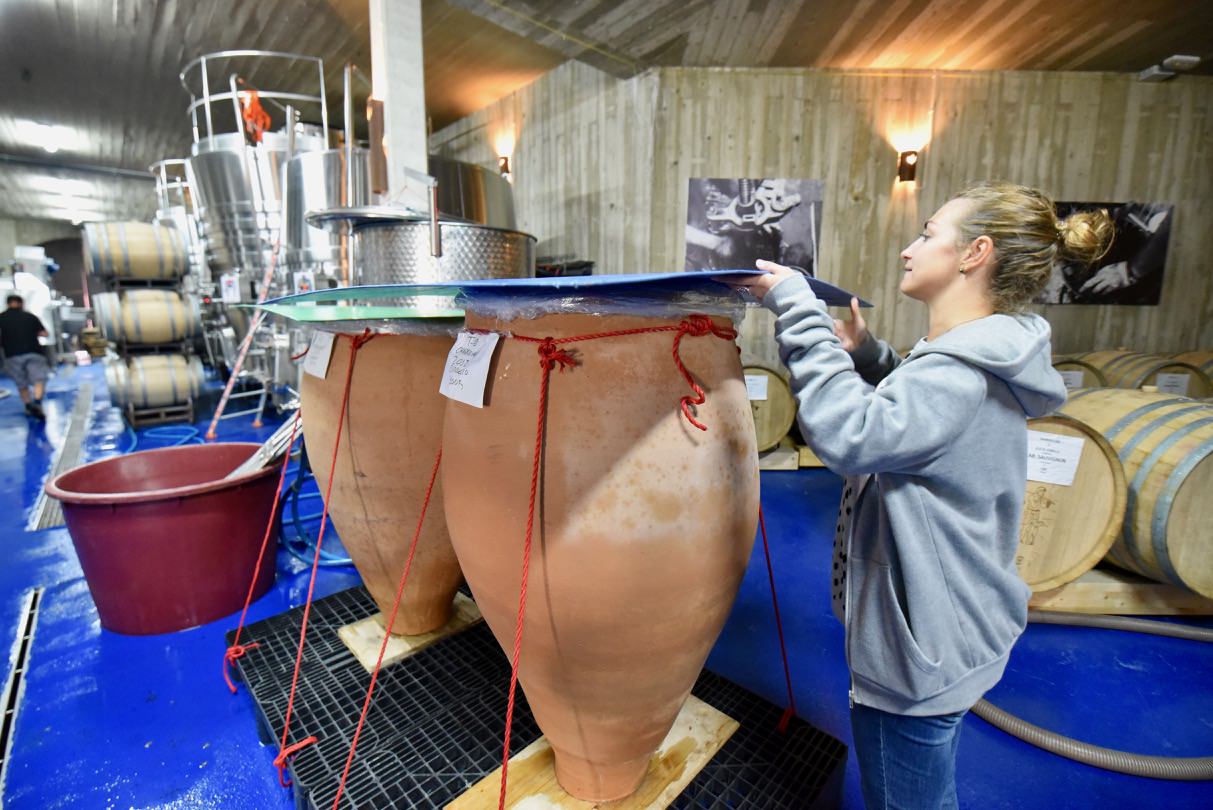
Love the land and it’s trees.
Juan José loves trees and hopes that the old oak and pine forests that existed around the hills would be revived. He loves trees. A lot. They plant trees even when they find an empty spot among the vines. There are wild boars in the forests around. One of them had gotten into the vineyard and gnawed at the trunk of a young oak sapling.
“The M$%@h@rf*&^#s. I would rather have them eat some grapes than kill my tree” said Juan José.
That’s the one time I heard him cuss. Considering the incredible quality of his Monastrell, that’s a fair deal for a wild boar.
Read more about Bodega Cerron.
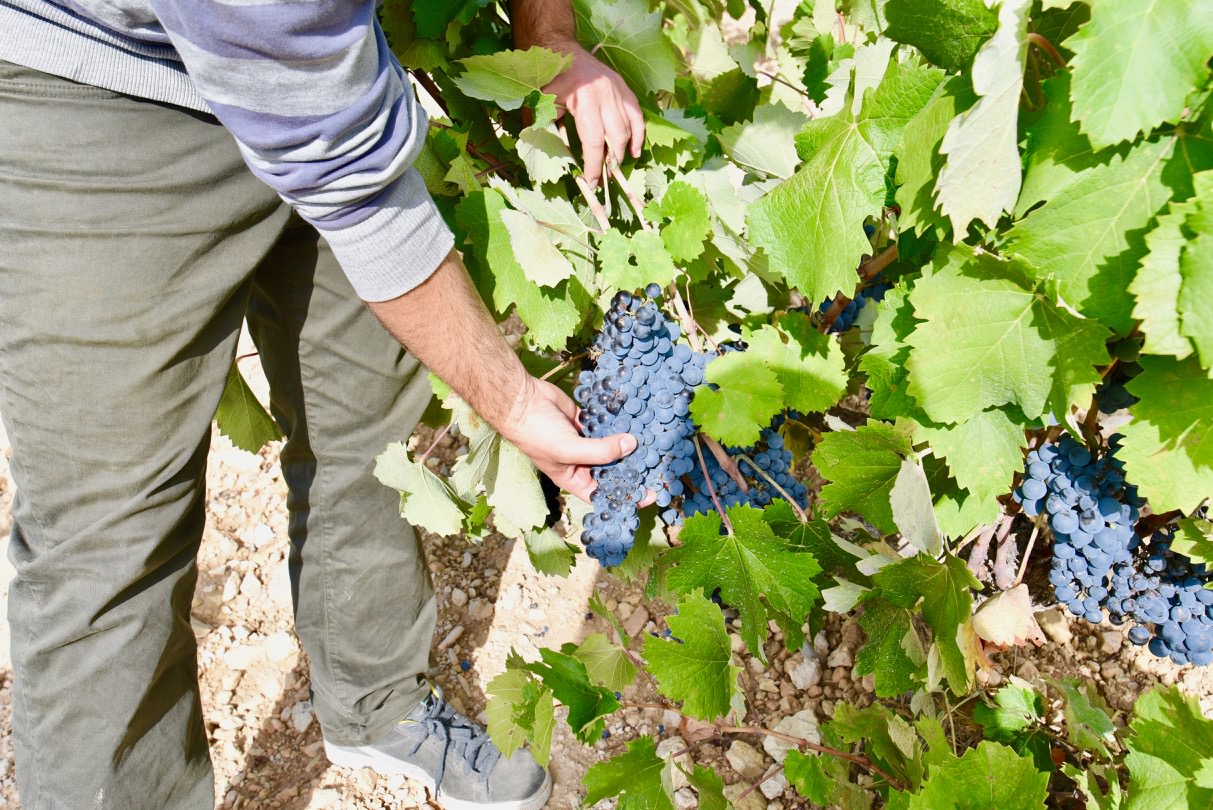


Facebook Comments